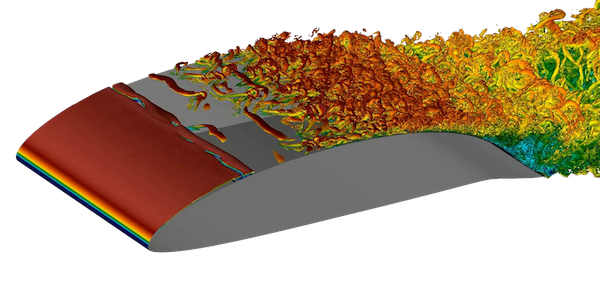About the project
TRANSEP - Flow physics and interaction of laminar-turbulent transition and flow separation studied by direct numerical simulations

The vision of this work is to overcome the failure of Computational Fluid Dynamics (CFD) to tackle one of the central unsolved fluid physics problems, namely predicting the sensitive flow physics associated with laminar-turbulent transition and flow separation. A recent, highly influential report by NASA clearly states that the major shortcoming of CFD is its “… inability to accurately and reliably predict turbulent flows with significant regions of separation”, most often associated with laminar-turbulent transition. The research address this shortcoming and develop and utilize computational methods that are able to predict, understand and control the sensitive interplay between laminar-turbulent transition and flow separation in boundary layers on wings and other aerodynamic bodies.
We will be able to understand enigmas such as the recent results from experiments where the laminar area of a wing grows after a smooth surface have been painted (increased roughness), or the drastic changes of laminar-turbulent transition and separation locations on unsteady wings, or the notoriously difficult interaction of multiple separation and transition regions on high-lift wing configurations. For such flows there have been little understanding of flow physics and few computational prediction capabilities. Here we will perform simulations that give completely new possibilities to visualize, understand and control the flow around such wings and aerodynamic bodies, including the possibility to compute and harness the flow sensitivities. We tackle these outstanding flow and turbulence problem using the new possibilities enabled by multi-peta scale computing.
These research questions are highly important in the design of new fuel efficient aircraft, where the high drag of the turbulent and separated flow needs to be avoided as much as possible. If laminar flow control is utilised in a modern transport aircraft a typical fuel savings of 15% is envisaged.

